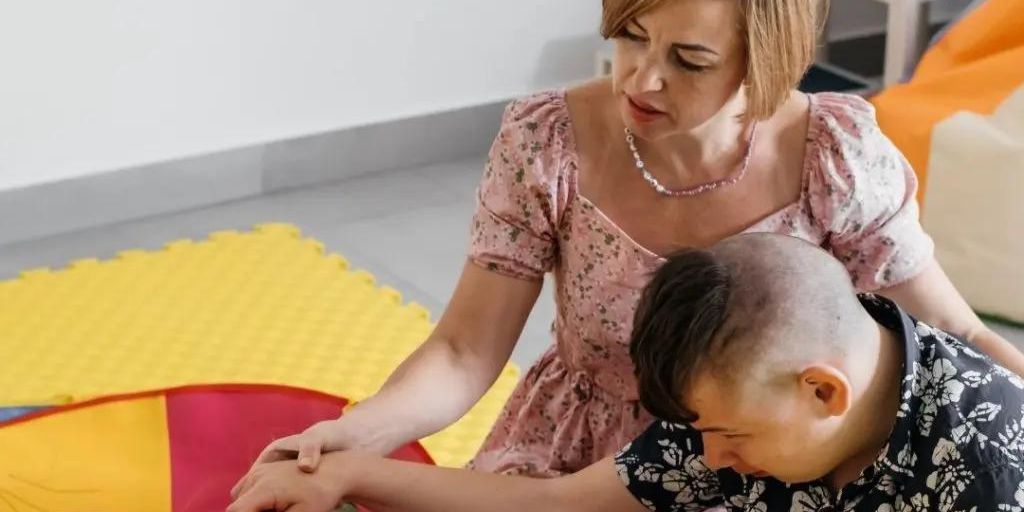
Myths about Autism & Sensory Integration
Myths about Autism & Sensory Integration
Before discussing on myths about autism & sensory integration, lets learn about what it is in brief –
What is Autism Spectrum Disorder?
Autism spectrum disorder is a group of complex conditions related to brain development that mainly affects social, communication & behavioral skills. It may also affect overall cognitive, emotional & physical health. These problems can be mild, severe or somewhere in between. In other words, it needs to be treated or cured. Further, tv ads and organizations look at Autism in a negative way. Additionally, even today professional cons claim Autism is curable.
However, Autism is considered a disability from a legal point of view. This is because Autistic people need access to extra support, care, and government aid. Since each person with Autism is unique, their need for support also varies. Autistic people have a high vulnerability in everyday life. Hence, when they are considered as disabled, it is to protect them from this vulnerability. There are many options available, but be mindful of what you choose!
What is Sensory Integration?
Sensory integration (SI) is form of therapy which mainly helps children cope with processing sensory input and learn how to use all senses together. SI is a form of therapy that involves sensory activities to help the child respond. It can make huge difference by helping children to manage their sensitivities & needs. It can help in enhancing focus; become more independent, improving behavior, reducing stress & anxiety in the child. It also explains why kids dread sitting on swings, giant wheels. Why do some crave continuous spinning? It also explains why copying from the board becomes so difficult. Further, why a child finds it difficult to sit at a place.
Note – SI can be offered by only trained therapist.
With increase in awareness of autism & its sensory integration therapy approaches to help children on spectrum & their family, there is significant rise in misconceptions as well. This blog will help in debunking Myths about Autism & Sensory Integration disorder and also create better understanding of the contribution that sensory integration therapist can make to enhance child’s well-being & promote independence in daily living activities.
Let’s bust few of the myths about autism & sensory integration –
#Myth 1.
Children with autism disorder self-stim, only to annoy others.
#Fact 1.
They typically self-stim to relieve their anxiety or feel comfortable in environment. Self-stimming is a common way for them to self-regulate, especially in a new place or circumstance, in order to calm down and feel better.
#Myth 2.
All children on spectrum have sensory issues.
#Fact 2.
It is common for children on spectrum to have sensory difficulties, but it is not necessary that each & every child has sensory issues. Not all who struggle with sensory processing disorder meets criteria for autism diagnosis, and vice versa.
#Myth 3.
More sensory input is always better.
#Fact 3.
Exposure to various sensory experiences are good for child’s development, but only if given in structured & controlled manner. Overstimulation may trigger the child & cause avoidance. Keeping it simple and introducing one thing at a time is the key. Do not force the child for participation if he/she is not comfortable.
#Myth 4.
Sensory Integration is the solution for all of the problems faced by the child on spectrum
#Fact 4.
It is not a universal solution for all problems. It has shown good positive changes in children, but it is not one & only therapy. SI therapy is always customized for each & every individual for best results.
#Myth 5.
All sensory activities are beneficial in the same way to every kid.
#Fact 5.
Every kid will react in his/her own unique way to the sensory experiences presented to them. Observe your child during his everyday routine and after that, build sensory activities to meet his needs.
#Myth 6.
Sensory integration is required only if these 5 senses (sight, sound, touch, taste & smell) are affected.
#Fact 6.
At school, we are taught that we have 5 senses – sight, sound, touch, taste & smell. But, we have 2 other hidden senses in addition which are crucial for child’s development. 1) Proprioception is for our body awareness – our muscles, joints and ligaments provide this information to our body. 2) Vestibular system is our sense of balance & where our body is in space, gravity.
#Myth 7.
Kids who face difficulties to process sensations are just ill mannered & they need to be more disciplined.
#Fact 7.
It may seem that kids with Sensory processing difficulties get angry for no apparent reason, moreover it is usually a result of hypersensitivity to sound, touch or other senses. It will be easier to cope up with child if you observe his pattern of behavior and learn about his triggers.
#Myth 8.
Kids who need SI Therapy are always hypersensitive.
#Fact 8.
Kids can be Hypersensitive (Over-sensitive) towards senses – avoiders, or they can be Hyposensitive (Under-sensitive) – Seekers. It is possible to have both hypersensitivity & hyposensitivity. They might feel uncomfortable with noise of fire cracker, but loves the noise of mixer grinder.
#Myth 9.
Child can cope up with sensory inputs irrespective of place, time or situation. They can cope up with loud noise at home, if he can cope up with it at school.
#Fact 9.
It is not necessary that child can tolerate sensations the way he does it at school/home/ or any place. As it varies greatly depending on the situation, location, time & many more variables contributing to the child’s reaction. The child may use up all the coping strength to deal with something at school, and needs to self-regulate & replenish the ability, by self stimming, at home.
#Myth 10.
They will grow out of it.
#Fact 10.
To be honest, it is possible but its not that common. It is not something that each & every child will get over without getting help. Through therapy we enhance quality of life of every individual and make it easier for them to cope up with sensory stimulations offered in day-to-day life by surrounding.
How to motivate your child
Prior to class and during the session, praise your child. Make him/her feel you are happy. Specifically, with the work, they are doing. Further, even if it means just sitting and following the therapists’ directions. Use motivators such as reward charts, hugs, edible rewards like candy or cookies. Additionally, follow the reward frequency that your therapist advises.
Takeaway message –
- There are many things that therapist can do to address the sensory symptoms or autistic traits that your child may have.
- We urge the parents to consult an Occupational therapist, for the child to learn how to process sensory inputs the world has to offer & overcome fears.
Sensory integration therapy is now one of the most requested and used interventions for autistic children. Sensory integration therapy is a type of occupational therapy that is typically provided by specially trained occupational therapists.
It entails specific sensory activities that teach a child how to respond appropriately to light, sound, touch, smells, and other input. Swinging, brushing, playing in a ball pit, and a variety of other sensory-related activities may be used as interventions. These activities may result in increased focus, improved behaviour, and even decreased anxiety.



Leave a Comment
(0 Comments)